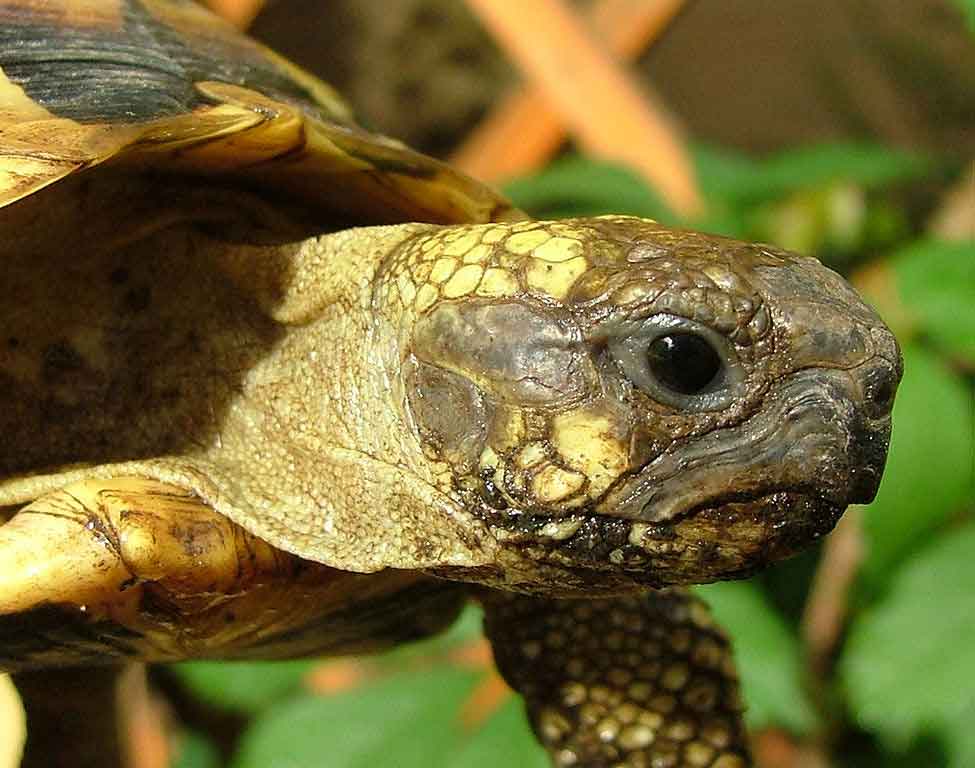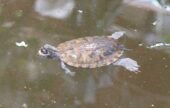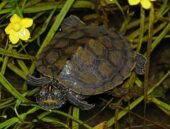
Buy turtles
The decision of buy turtles requires many prior considerations. Before a new turtle can finally settle in an outdoor enclosure or terrarium (very few species are suitable for it!), intensive information on the different species of turtles must be collected. Beforehand, there is no such thing as a typical turtle for beginners. All species are demanding and will live for many decades.
In Europe, the Hermann's tortoise (Testudo hermanni) is the species with which more people come into contact. The Greek tortoise (Testudo graeca) and Russian tortoise (Testudo horsfieldii), among others, have almost identical maintenance conditions. All three species can be well kept in an outdoor enclosure with the right equipment in Europe. But, as already mentioned, the purchase of turtles requires a lot of preparation and also a lot of time and, sometimes, money during the maintenance period.
Important information before you buy
where can i buy turtles?
An important question and the answer is very simple: turtles should be purchased from a breeder, or to a care or rescue center. It is also okay to take animals directly from the previous caregiver. Please, do not buy turtles in pet stores and, If possible, nor in the fairs and exhibitions of reptiles. Especially in pet stores, turtles are pure merchandise and often live there in confined spaces in terrariums. Even in the first weeks and months, animals are not kept properly for their species. Although the purchase saves the animal in question, send a new turtle to these conditions.
Turtles in need
Often there are people who unfortunately have to give up turtles. These animals are in dire need of a new home. If you think there is a good place for turtles in your home, It would be important that you contact veterinary clinics to try to contact someone who wants to get rid of one of these animals. You can also send a comment through this page, offering your turtle to someone interested.
Can my turtle live with other pets??
¡No! To put it quite provocatively, turtles are not animals that can coexist with other pets. The turtle needs a suitable outdoor enclosure and only the owners themselves have access to this enclosure. The cats, dogs, rabbits or even small children (of course, children are not pets, before you get nervous) should not enter the outdoor enclosure of turtles. Turtles themselves are not pets.. They are wild animals under the protection of the species and need housing conditions appropriate to the species.. Dogs and other pets should not be in the sight of turtles. These may include, an enclosure should never have a transparent fence, like a metal mesh, etc. The best is an enclosure of large and opaque stones, palisades or wooden boards.
Can I have turtles in a terrarium?
In fact, keeping turtles in a terrarium is usually taboo. Only a few species come close to the size and requirements to be kept in a terrarium. Among the turtles, the Kleinmann's tortoise (Testudo kleinmanni) and Cape tortoises (Homopus) can be kept in a terrarium. But, the best is a true indoor terrarium. It is a room that is partially available to turtles and is heated and technically equipped for it.
If you don't have space for an outdoor enclosure and want to buy a turtle that will live in a terrarium, it is important that the species is as small as possible. Well, but really very wet, it can also be kept in a terrarium the Black-breasted leaf turtle (Geoemyda spengleri).
The exception for terrariums are animals quarantined in case of illness and hatchlings, that is to say, young turtles that have just hatched and may still be too small for the outdoors. Even these little hatchlings can live in a greenhouse in an outdoor enclosure. Terrariums are acceptable as quarantine. Only for a very limited time, with good technology and still in a good size. These may include, you can build your own terrarium with boards OSB ⓘ. In a size of 2 x 2 m, is quite acceptable as a quarantine for a Hermann's tortoise adult.
how much are the turtles?
The first cost is when you go to buy your turtles. A Hermann's tortoise will cost between 80 and 120 euros on the breeder if he was born in the current year. The pups that are already a few years old can be a few euros more expensive. Turtles whose sex has already been determined are quoted accordingly. Female turtles are much more expensive and usually have a price of up to 400 EUR. Most of them have already laid their first eggs and, Therefore, are interesting for other breeders. Males are usually priced between 80 and 150 euros until they are very old. There are quite a few more male turtles. In private tenure and with no intention of breeding, the sex of the turtle is irrelevant and there is no need to be discouraged by it.
Turtle maintenance carries other costs. Here come very different points:
- Greenhouse costs.
- Costs of purchasing heat lamps
- Accommodation and drinking fountain costs
- Costs of automatic window openers
- Timer and power outlet costs
- Costs of veterinary examinations
In addition to the costs of turtles, there are also expenses that take up the owner's time:
- Remove feces from the enclosure
- Provide drinking water daily
- Growing food plants for a varied diet
- Provide food in the outdoor enclosure
- Maintenance of equipment in the outdoor enclosure
- Preparations and aftercare for the winter enclosure
If the enthusiasm is not broken, you also have to take into account who will take care of the turtles in case of holidays or disease. Turtles are able to live self-sufficiently in a good outdoor environment and rarely need human care.. But, especially for the water supply, there is usually no self-sufficient solution that can cover a week or two of vacation. It also, a turtle should never lie on its back shell in the sun. This can happen during climbing exercises and if you are unable to get up on your own., help needed. There should always be someone to take care of the turtles once a day and check that everything is in order.
Do turtles stay alone or in groups??
Turtles are solitary animals and do not follow groups. Nor do they form fixed pairs. They come together to mate and if many turtles live in one area, you will naturally see them in groups at food stalls. Logically, all animals want food. The same goes for very suitable sleeping places. Of course, various animals also gather there in nature. But, do not maintain a community. In captivity, turtles can be kept individually. Couples are less recommended, because if one of the animals is more eager to make a fuss, always penetrates the same animal. The conspecific then has no real option of coming to rest.. If there are several animals, then three or more. But not a couple.
In the case of sexually mature turtles, at least two females are always recommended for one male. The enclosure should also be large enough for the turtles to avoid each other and hide.. the great roots, clay shelters, etc. are great options in this case. Adult European turtles should live in no less than 10 square meters.
Buy a turtle: It is healthy?
You won't know at first glance how healthy a turtle really is. All breeders can tell you a lot about this. But, breeders who have been breeding tortoises for many years and have a name in these circles are very reliable. But, there are a few things you should look for when buying a turtle:
- Shell: Young animals usually still have a slightly soft shell.. Adult animals always have a very firm shell.
- Eyes: Turtles have very clear eyes. If the eyes are cloudy or even sunken, the turtle is not in shape.
- Movements: Juveniles and adult turtles walk very nimbly and make a strong impression. They manage to lift their shell completely and carry it without drag legs. In fresh hatchlings, the shape of the abdominal shell may still be slightly curved downwards. This causes them to sometimes sway when walking.. This is fine. But, the turtles that seem powerless, with trembling legs, etc., are not a good sign.
How can I transport the turtle?
If you have bought a turtle and the conditions of the new home are adequate, the turtle can settle in it. As such, must transport it from the breeder to you. This can be done with an animal transport service for reptiles and turtles, or you can take the turtle yourself. In both cases it is advisable to use a small polystyrene box. Insulates from heat and cold. Cover the ground with hay to protect the turtle from blows. Hay dampens the usual movements during transport in the car, etc. And believe me, packages are handled differently when transporting animals than when transporting normal packages by mail.
Do I have to register the turtles?
Yes, most of the tortoises living in Europe are subject to registration and are protected species. The breeder will usually tell you if your turtle is a protected species. But, you should ask him and do some research on the internet. Registration is easy, often costs nothing and is very important. If you do not register the turtles, can be fined and, in the worst case, animals can be confiscated.
List of turtles for maintenance in captivity
1 African forest turtle
... Read more
2 Common musk turtle
... Read more
3 Razor-backed musk turtle
... Read more
4 Chinese softshell turtle
... Read more
5 Chinese stripe-necked turtle
6 Red-bellied short-necked turtle
7 African helmeted turtle
... Read more
8 African spurred tortoise
9 Eastern mud turtle
... Read more
10 Striped mud turtle
... Read more
11 Spot-legged wood turtle
... Read more
12 Florida red-bellied cooter
... Read more
13 West African mud turtle
... Read more
14 Rio Grande cooter
... Read more
15 Painted wood turtle
... Read more
16 Scorpion mud turtle
... Read more
17 False map turtle
... Read more
18 Toadhead turtle
... Read more
19 Leopard tortoise
... Read more
20 Mississippi map turtle
... Read more
21 Marginated tortoise
... Read more
22 Hermann's tortoise
... Read more
23 Greek tortoise
... Read more
24 New Guinea snapping turtle
... Read more
25 Nicaraguan slider
... Read more
26 Russian tortoise
... Read more
27 Red-footed tortoise
... Read more


























